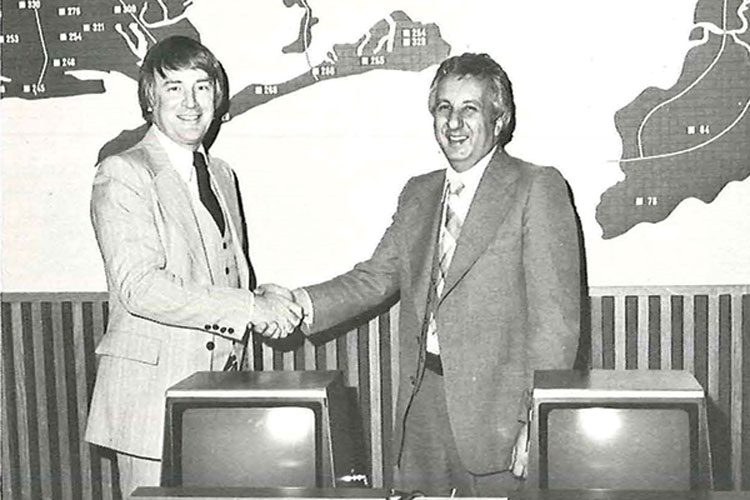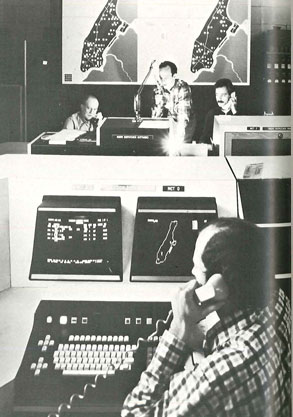
Computer-Aided Dispatch, 1980: “By No Means the End of the Story”
By GLENN CORBETT
lthough we don’t give a second thought to technology and its role in our daily lives today, the emergence of computers in the fire service 40 years ago was simply amazing. Communication center operations was among the first places that computers found a role. Up to then, fire apparatus were dispatched manually. The responding fire companies were selected based on the fire alarm telegraph box nearest to the incident, as had been done for more than a century. In this month’s anniversary installment, we read about one of the first applications of computer-aided dispatch (CAD) in a large city. New York City’s STARFIRE system allowed the city to keep up with the skyrocketing number of calls for service at the time, something we take for granted today.
Download a PDF of the original article at http://emberly.fireengineering.com/archives.html.
Fire Engineering, October 1980
Computer Aided Dispatch Becomes $15 Million Reality in New York City
BY JOHN J. MOHAN
Director of Information Bureau & Computer Services, New York Fire Department
… In 1978, there were over 473,000 alarms transmitted in New York City … [triple that of 1968], when the project was first conceived…. the efficient dispatching and monitoring of [New York City’s 350 firefighting units] contributes greatly to the saving of life and the preservation of property …. [and] the ability to capture the alarm electronically and have an up-to-the-second status on the available units directly translates into high availability and reduced response time ….
More efficient status-keeping also reduces “spurious unavailability” … when the unit is actually available but [is listed as unavailable] because of [a backlog]…during peak work load conditions ….
Unlike a fixed assignment card, STARFIRE is able to select those units that provide the quickest and most effective response based on knowing which units are actually available at the time of the alarm. Special fire fighting instructions associated with specific boxes that relate to water supply and access are included in the alarm printout.
Coverage monitored
Area coverage is constantly monitored to reveal uncovered response neighborhoods. (A response neighborhood is that geographic area covered by the nominally first-due unit pair.) Relocations are computed on the basis of the past alarm rate history for that area, the distance to be traveled, and the remaining neighborhood coverage. Whenever a response neighborhood becomes uncovered, a unit from a well covered area is selected to relocate to that uncovered neighborhood.
Field requests for additional equipment and higher alarms are entered by the radio operator and instantaneously processed on a priority basis.
STARFIRE provides support to the field all the way up the chain of command.
There is a report available on demand via the alarm teleprinter/selector panel (AT/SP) that gives a borough synopsis of all working boxes and the units assigned to them. This report also summarizes all units that are out of service, all relocated units not at fires, the current percentage of full availability, and the current alarm rate. This report allows a division, battalion, or borough chief to determine the whereabouts and status of his units and is also an assist to the department in redeploying its units.
 |
| (1) Dispatchers work at computer terminals with maps of Manhattan fire units in background. |
Time history available
A detailed incident time history for each alarm is available upon a borough commander’s request, that gives the time-stamped sequence for every action connected to the incident. This invaluable report can be used both as a fire fighting aid, and as an informational response to inquiries from other city officials and the media. The introduction of the new “on-the-scene” code (10-84), enables the fire department to accurately monitor response times measured from the citizen’s first contact until the first unit rolls in.
During the times of major emergencies, the CCC site becomes the chief of department’s citywide command post from which he can monitor and control the total resources of the fire department, as well as all other incidents in progress. The giant city map (a separate one for engines and ladders) reveals at a glance, the status of every house.
For the first time, the chief of department can supervise the operations of the entire fire department from one location.
Dispatch in 40 seconds
STARFIRE provides increased availability by the electronic receipt of alarms, computer selection of responding units, and the automatic notification of these units in an average of 40 seconds after a citizen’s first contact with the fire department.
Both mechanical box and electronic emergency response system (ERS) circuits are connected directly to the computer. Telephone and ERS voice alarms are entered by an operator who is in contact with the citizen. Then, based on company availability, STARFIRE selects and displays an assignment to the dispatcher for his approval. After the dispatcher OKs the response assignment, an alarm message is sent to the responding companies.
When an alarm arrives at the fire station, it is printed out at the watchdesk, giving the units scheduled to respond, and a time-stamped summary of all that is known about the alarm.
 |
| (2) John Mohan, director of the New York Fire Department bureau of information and computer services, left, congratulates Ron Scherma, vice president of Brad Nation, on completion of computerized dispatch system. Maps of five boroughs are in background. |
Adapted to DC circuits
The alarm printout system on the AT/SP was specially adapted to the old DC telegraph circuits to minimize any additional communications costs. The AT/SP also includes a response panel for the fire fighting unit to indicate acknowledgements, unit status, and report requests. There are over 300 AT/SP units installed in the field at a cost of $3 million.
The alarm summary includes information obtained from the citizen and additional information that the dispatcher has about the request for service. The fire company acknowledges by pressing 10-4 on the AT/SP, tears off the dispatch, and turns out the apparatus.
If unable to respond, the 10-14 button is pressed instead of 10-4, and the computer automatically selects a substitute company.
Upon returning to quarters, the panel is used to update the computer, indicating that the company is back. A small light above each button tells the member on house watch what he has to press. If he presses the wrong button, he can clear the panel by hitting the clear button and starting again.
Expansion possibilities
Although STARFIRE has reached maturity, this is by no means the end of the story. Now is the time for planning its future. STARFIRE is the building block upon which a more advanced fire fighting support capability can be built. A few concepts that are at the early discussion stage include:
A digital status report system would have the capability of entering messages via a terminal on the apparatus. For example, inservice status could be entered by pressing an “AA” button (available on the air) similar to the “AQ” (available in quarters) on the AT/SP. This system would operate via a radio link connected to STARFIRE.
A hazard data base could store life, exposure, extinguishment, and extension hazards in STARFIRE. The data base would contain structural data, combustible materials storage locations, detailed water supply information and exposure problems. Action at a particular box, address, or geographical area could generate an automatic retrieval of this data. The information could then be relayed to the field via the existing radio system to augment eyeball judgments.
Early arson detection data base could be installed on STARFIRE that would contain addresses of buildings that are highly suspect as arson candidates. Any fire activity at these buildings would automatically generate a notification to the fire marshals, even before the first unit is on the scene.
Advanced field communications unit could carry a mobile computer center connected via a radio link directly to STARFIRE. This unit would be able to deliver the full capability of the computer system at the fireground scene.
These are but some of the possible ways that STARFIRE can be expanded. The determination of exactly which paths will be taken will evolve from the New York Fire Department’s greatest needs.
Fire Engineering Archives

